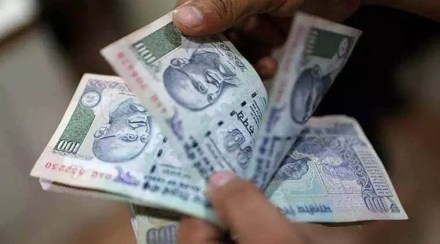The Centre’s subsidy expenditure on food, fertilisers and fuel may be about Rs3.56 trillion in FY24 or 33% lower than Rs5.2 trillion seen for FY23, aided by likely discontinuation of free grains scheme and cooling of global commodity prices. However, the Centre may choose to keep the initial Budget Estimate for these subsidies in FY24 close to the FY23 BE of Rs3.2 trillion.
The three major explicit subsidies account for nearly 90% of the Centre’s annual expenditure on subsidies and subsidy-related expenditures.
The Centre’s subsidy expenditure on food as well as on fertilisers may decline by 30% each on year in FY24. The subsidy outgo on cooking gas may decline by 80% to around Rs6,000 crore in next financial year.
“Food subsidy will come down as the free food scheme (PMGKAY) can be withdrawn as the normalcy has been restored after the pandemic. Secondly, global commodity prices have tended to stabilise and hence fertilizer prices would be down thus reducing the subsidy on imported fertilisers,” Bank of Baroda chief economist Madan Sabnavis said. “In my view, we should be able to cap the subsidies in FY24 at the budgeted levels for FY23. This can always be revisited in case there are any new problems that surface.”
Also read: UK Trade Secretary in India as next round of UK-India FTA Talks begin
Food subsidy, which used to be around Rs1 trillion, spiralled in the past three years due to the government’s free grains scheme launched after Covid broke out in FY21. Besides clearance of most arrears, the annual food subsidies rose to a record Rs5.25 trillion in FY21 due to PMGKAY cost of Rs1.05 trillion. The PMGKAY cost was Rs1.35 trillion in FY22 and is estimated to be Rs1.25 trillion for FY23. However, the actual cash outgo may be around Rs80,000 crore in FY23 and another Rs20,000-odd crore may be released next year as some of the bills are not expected by end-March 2023, sources said.
Sources said that the food ministry is likely to ask for Rs1.75 trillion for FY24 under subsidy head as the free ration scheme is unlikely to be extended beyond December 31, 2022. Including some of PMGKAY payments that are to happen next year, the food subsidy may be around Rs2 trillion next fiscal.
“Lower wheat procurement and depletion of grains stocks because the implementation of free ration scheme, has contributed to lower food subsidy expenses in the current year compared to the previous year,” an official said.
Due to lower production and higher global demand, The Food Corporation of India’s (FCI)’s wheat procurement in the 2022-23 season fell by 56.6% to only 18.8 million tonne (MT) against 43.3 MT purchased from the farmers in the previous year.
Global fertiliser prices have softened in the last month and thus are likely to reduce the subsidy burden of the government. Arun Singhal, secretary, the department of fertilisers told FE recently. In the current fiscal, the fertiliser subsidy is likely to be in the range of Rs 2.25-2.5 trillion in FY23 because of elevated global soil nutrients and liquified natural gas (LNG) prices. Analysts see softening global fertiliser prices reducing the subsidy burden next year.
According to Icra chief economist Aditi Nayar, the amount required for food subsidy in FY24 will take a cue from whether the free foodgrain scheme under PMGKAY is extended beyond December 2022 and the magnitude of fertiliser subsidy would be driven by market-determined global prices. “The outgo for fuel subsidy is likely to be relatively small when compared with the outlay for food and fertilisers,” Nayar said.
Also read: Centre plans amnesty scheme for exporters
The savings would help the government to target a fiscal deficit in the range of 5.5-6% of GDP in FY24 from the target of 6.4% in FY23, to reach less than 4.5% by FY26 as per the glide path, analysts reckon.
